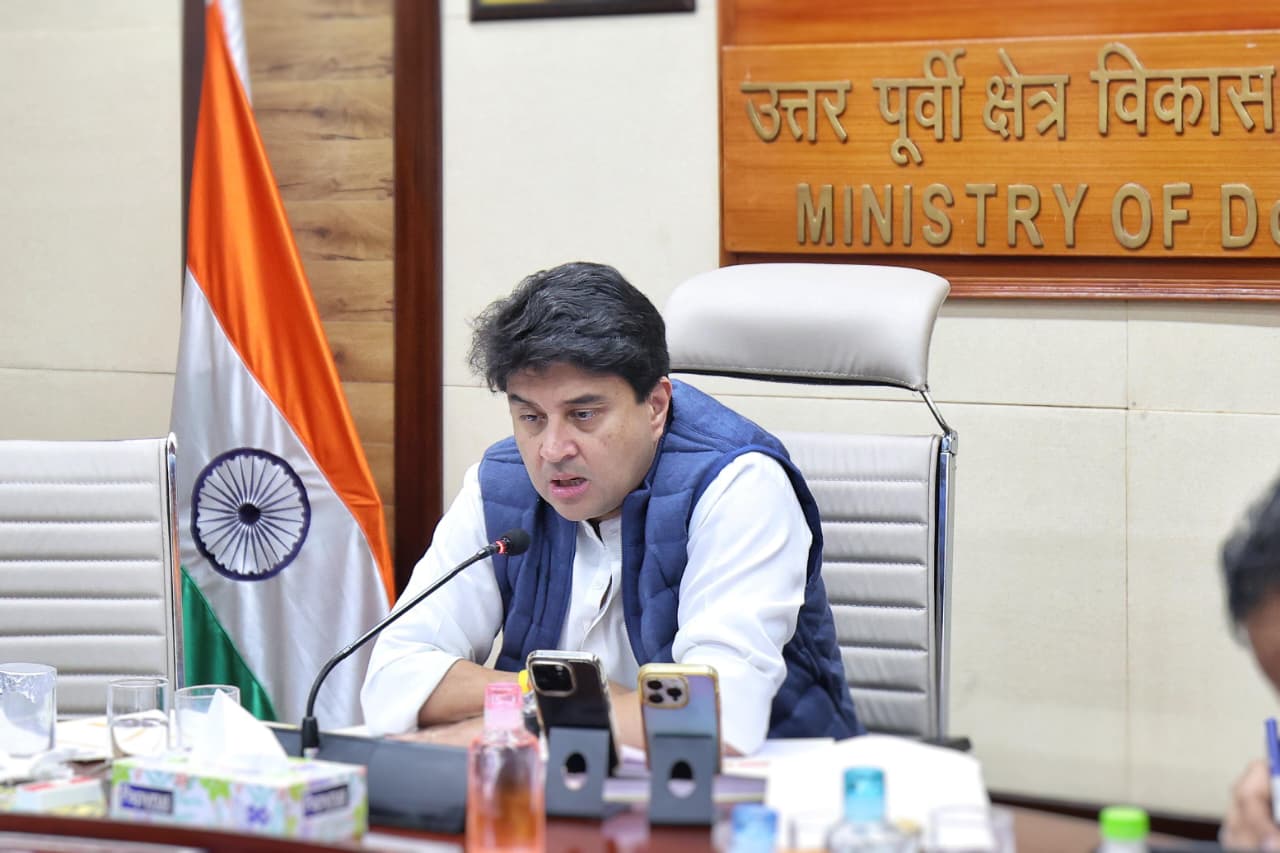The discussions underscored the need to view the Northeast as a single, integrated market.
NEW DELHI: Union Minister for Communications and Development of North Eastern Region, Jyotiraditya M. Scindia participated in the Fourth High-Level Task Force meeting on Milk, Eggs, Poultry, Meat and Fisheries.
The meeting was chaired by the Chief Minister of Arunachal Pradesh, Pema Khandu, with officials from Nagaland, the Department of Fisheries, and representatives from all eight Northeastern states in attendance.
The Task Force undertook a detailed demand–supply analysis for all eight states, creating the foundation for a truly composite framework that goes beyond a uni-dimensional approach. Discussions covered connectivity and logistics, infrastructure and value chains, human resources, breeding and productivity enhancement and avenues for expanding credit access and private investment. This integrated perspective has opened important new directions for the region’s food systems strategy. The minister emphasised, “Our aim is to build a connected, efficient and resilient food ecosystem for the Northeast that strengthens livelihoods, expands market access and ensures better nutrition for every citizen.”
To ensure rapid progress, the meeting resolved to begin interventions in two states for each product category—milk, eggs and poultry, meat and fisheries, to generate real-time learnings that can be scaled across the region, enabling sharper, evidence-driven expansion.
A clear implementation architecture was also outlined, with coordinated participation from central ministries, state departments, and private stakeholders. Each intervention will be mapped to specific stages of the value chain so that responsibilities remain well-defined from origin to end consumer. Funding components for these pilots will similarly be structured with joint contributions from all three partners.
The discussions further underscored the need to view the Northeast as a single, integrated market. Better movement of surplus to deficit areas, identification of competitive strengths of each state, and stronger intra- and inter-state trade linkages will strengthen the region’s ability to operate as a cohesive food economy. Over time, this integrated market approach will catalyse efficient logistics, deeper market access, and broader economic opportunity.
Scindia emphasized the importance of a bottom-up approach, drawing strength from the insights of each state while aligning them with national priorities and the expertise of the private sector. Concluding the session, he stated, “By strengthening production, upgrading value chains and improving logistics, we are laying the groundwork for a future where the Northeast’s food economy is self-reliant, market-ready and driven by shared prosperity.”


